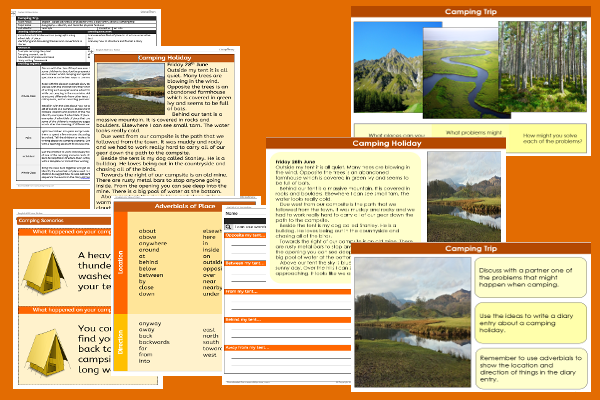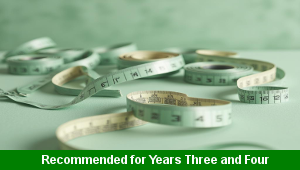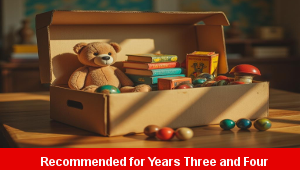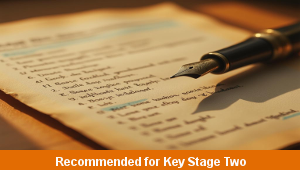Camping Trip

This English teaching pack for Key Stage Two gets the children to explain and model how to write a diary entry about a camping trip to a special location using adverbials of place to structure the events and describe nouns in a recount.
The class can select and expand on a scenario that could happen during a camping holiday to suggest how the problem could be solved by the conclusion of the family’s trip.
Download this teaching pack including a lesson plan, classroom activities and an interactive presentation to explain and model how to write a diary entry about a camping trip to a special location using adverbials of place to structure the events and describe nouns in a recount
Activities in this teaching pack include a shared reading text to explain how to structure and format a recount of an imagined trip to a special holiday location, a set of cards to select narrative events to use in a diary entry about a camping trip, a vocabulary word bank to structure and sequence a recount using adverbials of place to indicate the position of nouns and a template to compose a diary entry about a camping trip to a special location.
The interactive presentation gets the children to explore how to write a diary entry about a camping trip to a special location using adverbials of place to structure the recount.
This lesson is part of an English scheme of work to get the children to identify and record how to compose and publish recounts using adverbials of time and place to describe family holidays to different places in the world. There are teaching activities for shared learning, differentiated worksheets to support independent learning and interactive presentations to introduce concepts and key skills.
-

Length Calculations
Practise using number calculations skills for addition, subtraction, division and multiplication when solving problems related to length measurements
-

Maths Calculations Assessment
Assess abilities in solving a range of different number problems for addition and subtraction when working with informal and formal written calculations
-

Determinant Lists
Explain and model how to make lists of objects used and found in different locations to match the correct determinants of a and an
-

English SPAG Assessment
Assess abilities in composing sentences for fiction and non-fiction using the correct spellings, punctuation marks and grammar vocabulary phrases
